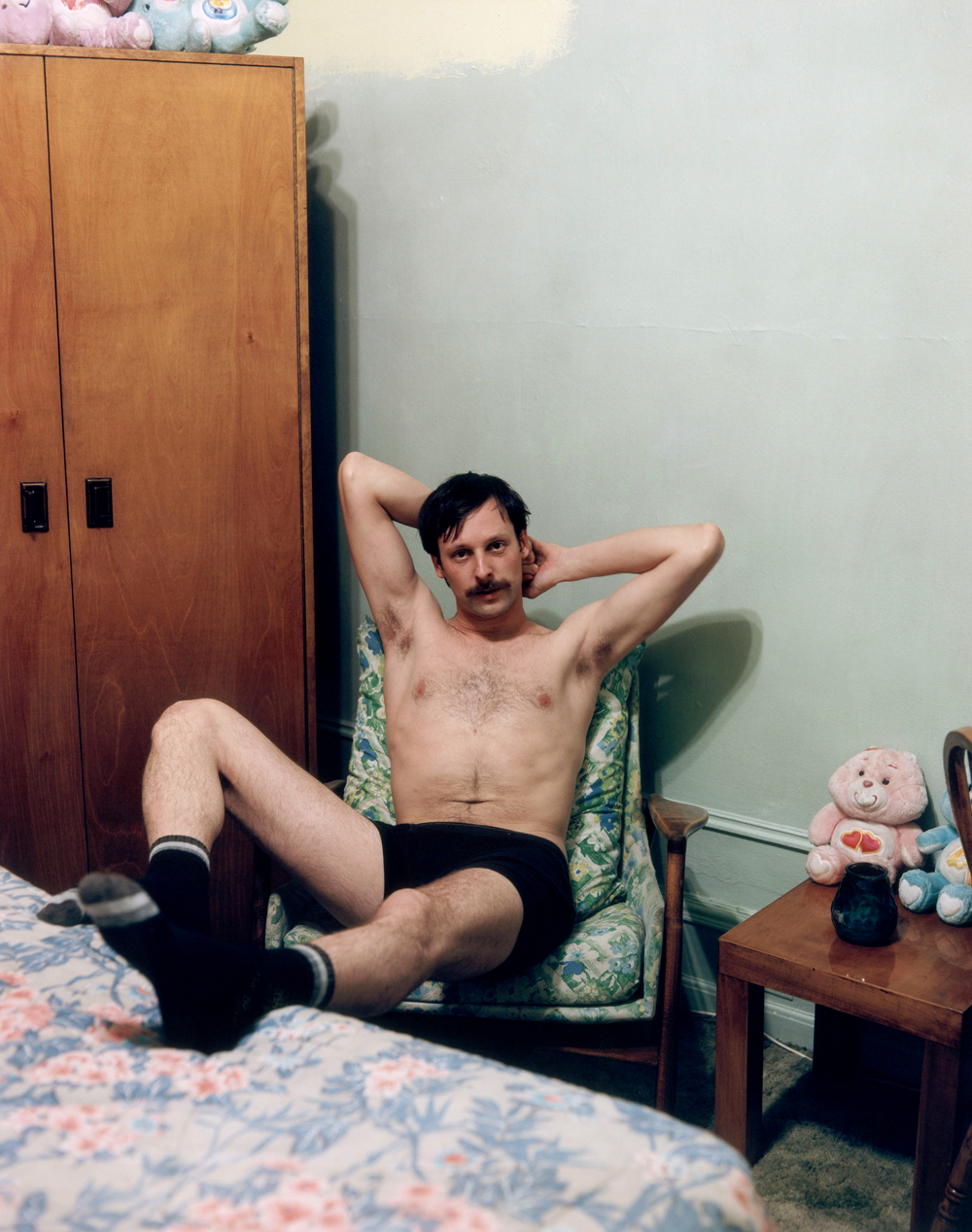Leigh Ledare
Confession, amateur porn, vulnerablility and a complicated mother-son relationship
Confession, amateur porn, vulnerablility and a complicated mother-son relationship

A woman with dyed red hair romps on the bed in sheer black lingerie, licking her lips and spreading her legs unabashedly for the camera. The images resemble profile pictures on a swinger’s website, or an amateur porn collaboration between a middle-aged divorcee and her new boyfriend. But in fact, it’s her son behind the camera. The question is whether there’s anything left to discuss beyond the obvious broken taboo and blatant manifestation of Oedipal complex, or whether we dismiss this as exploitation, sensationalism, or a severe case of over-sharing.
Yet what kept me from turning away from Leigh Ledare’s images is how capable the artist is of catching his mother in even more intimate and vulnerable positions, with her clothes on. The photographs, text and ephemera that comprise the artist book and eponymous exhibition ‘Pretend You’re Actually Alive’ (2008) and the exhibition ‘You Are Nothing to Me. You Are Like Air.’ (2008) contextualize and complicate the bracing nudity with an even more brutal and personal narrative. In the book, snapshots of Ledare’s mother having sex with one of her lovers are set off by poignant portraits of her sitting dourly on the sofa with her hand in a medical brace, or with her eyes closed, posing as a corpse. For every nude photograph, there is another, more revealing document: Ledare’s grandmother in the hospital before her death, family snapshots of the artist as a teenager, along with the artist’s typed diary entries and scribbled notes.

The book forms a complicated portrait of Ledare’s mother, Tina Peterson, as a person and her persona, as well as her son’s fraught role as her portraitist. We see Peterson as a young ballet prodigy who was once featured in Seventeen magazine, as well as the ageing mother who has quit multiple jobs, perpetrated credit card fraud, and seeks wealthy benefactors through the personal ads. But Ledare’s photos also sensitively address her more common maternal vulnerabilities, in particular her obsession with the trappings of her former glamour. Ledare photographs Peterson at home, lying naked in front of a stack of several large cardboard boxes all labelled ‘vintage shoes’. In a hand-written note at the end of the book she itemizes her son’s inheritance, which is to include her ‘antique umbrellas’, ‘collectible tea sets’ and ‘cookie business plans’. Such documents expose the life of unrealistic aspirations and unfulfilled ambitions that may have brought Peterson to adopt this persona. But they also suggest what might have led her son to introduce the camera into the dynamic.
But Ledare also makes a conscious effort to counter his position as the photographer with that of the subject. In his series ‘Personal Commissions’ (2008), he answered personal ads from women whose desires echoed those of his mother’s, and paid them to photograph him in their apartments, in a scenario of their choosing. Displayed as a stack of framed portraits leaning against the wall, the images show him posing nude wearing fishnet stockings on his face or surrounded by a collection of stuffed teddy bears. But the most telling detail is perhaps the artist’s moustache – on a handsome young art school graduate, the bushy moustache seems to function as a parodic disguise, disturbing the series’ ostensible earnestness. For me, the question of the moustache inflects the artist’s whole project: how self-conscious, how ironic is this?

Indeed, Ledare’s work reveals signs that the relationship between mother and son is also one of professional complicity. In an interview printed on the book’s cover, Peterson defines herself as the ‘model’ who is ‘working her butt off’. At the same time, photo-booth strips of Ledare and his mother mugging for the camera and making out like teenagers provide glimpses of the pair as willing co-conspirators. Such insertions create a layer of artifice that unsettles the raw, confessional mode that Ledare seems to be emulating. His predecessors in the field, like Larry Clark and Nan Goldin, have also confronted sexual taboos and flirted with pornography, or, as with Richard Billingham’s documentary images of his family, raised the stakes of familial intimacy and revelation. Despite their explicitness, Ledare’s photographs are neither bluntly documentary nor achingly sincere, but are knowingly mediated through the languages and tropes of contemporary art. His idiom is that of an artist who has already absorbed the romanticization of these previous projects and is looking for way to further complicate the relationship of artist and muse.
In this way, Ledare’s work might signal a shift in this kind of expressionist, confessional tradition of photography. In a culture where candid personal photographs litter the Internet and people willingly use reality TV shows to expose their personal baggage, Ledare is aware that any attempt at authenticity will already be polluted. Maybe the confessional can no longer be confronted head-on, but rather with a sidelong glance, or with a knowing look out the corner of one’s eye. But Ledare’s gazes are no less poignant or penetrating because of it.
























